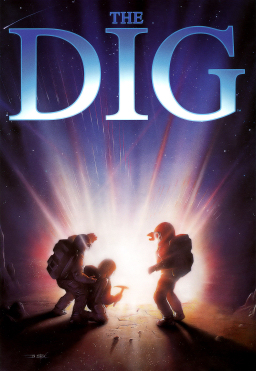
The Dig is a point-and-click adventure game developed by LucasArts and released in 1995 as a CD-ROM for PC and Macintosh computers. Like other LucasArts adventure games, it uses the SCUMM video game engine. It features a full voice-acting cast, including voice actors Robert Patrick and Steve Blum, and a digital orchestral score. The game uses a combination of drawn two-dimensional artwork and limited, pre-rendered three-dimensional clips, with the latter created by Industrial Light & Magic.

Digger is a video game released by Canadian developer Windmill Software as a self-booting disk for IBM PC compatibles. It is similar to the 1982 arcade game Mr. Do!Digger was developed by Rob Sleath, the primary developer of Windmill games. In 1984, Digger was converted to run on IBM PCjr and IBM JX.

Lode Runner is a 2D puzzle-platform game, developed by Douglas E. Smith and published by Broderbund in 1983. Its game-play mechanics are similar to Space Panic from 1980. The player controls a character who must collect all the gold pieces in a level and get to the end while being chased by a number of enemies. It is one of the first games to include a level editor.
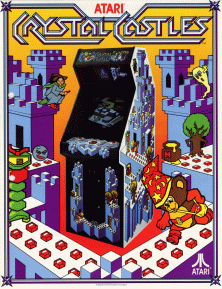
Crystal Castles is an arcade game released by Atari, Inc. in 1983. The player controls Bentley Bear who has to collect gems located throughout trimetric-projected rendered castles while avoiding enemies, some of whom are after the gems as well. Crystal Castles is one of the first arcade action games with an ending, instead of continuing indefinitely, looping, or ending in a kill screen, and to contain advance warp zones.

Sword of Fargoal is a dungeon exploration video game by Jeff McCord, published by Epyx for the VIC-20 in 1982 and the Commodore 64 in 1983. The game was originally released on cassette tape and 5¼" floppy disk formats.
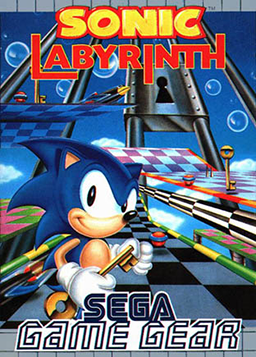
Sonic Labyrinth is an action-puzzle game developed by Minato Giken and published by Sega for the Game Gear in 1995. The game features Sonic the Hedgehog exploring maze-like stages from an isometric perspective. Dr. Robotnik has robbed Sonic of his trademark speed, so Sonic walks slowly but can roll into a ball and dash across the stages.
Twinworld is a video game, published by Ubi Soft for the Amiga and Atari ST in 1989. Ports for the Commodore 64, Amstrad CPC, and Acorn Archimedes were released in 1990.
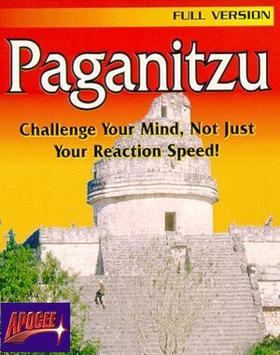
Paganitzu is a puzzle video game created by Keith Schuler and published by Apogee Software for IBM PC compatibles in 1991. It is the sequel to Chagunitzu. The player controls Alabama "Al" Smith, who works his way through an ancient Aztec pyramid while solving Sokoban-like puzzles.
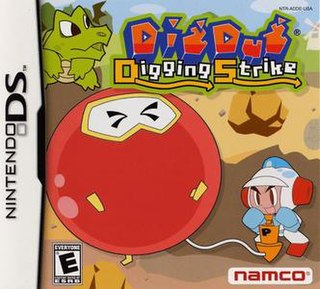
Dig Dug: Digging Strike is a 2005 maze video game published by Namco for the Nintendo DS. In Europe, the game was published by Atari Europe. It is the fifth entry in the Dig Dug video game series, and the second to be made for a home platform. The game follows series protagonist Taizo Hori, bitter about his son Susumu getting more attention than him — after a chain of tropical islands is threatened by monsters, Taizo sets out to defeat them and reclaim his fame. Gameplay combines mechanics established in the original Dig Dug and its sequel Dig Dug II, centered around sinking a large "boss" character into the ocean by digging under large stakes in the ground.

Tinkle Pit is a maze arcade game that was released by Namco in 1994 in Japan. It features many of the characters from the company's earlier games.

Namco Classic Collection Vol. 2 is a 1996 compilation arcade game developed and published by Namco. It is a collection of four of Namco's popular games: Pac-Man (1980), Rally-X (1980), New Rally-X (1981) and Dig Dug (1982). Alongside the original games, three new "Arrangement" games based on each game are included.

Pac-In-Time is a platform game developed by Kalisto and published by Namco, featuring the arcade character Pac-Man. It was released in 1995 for MS-DOS, Macintosh, Super Nintendo Entertainment System, and Game Boy.

Diggers is a puzzle video game for the Amiga CD32 in which the player takes control of a mining team excavating a planet for precious minerals.

Boomer's Adventure in ASMIK World, known in Japan as Teke! Teke! Asmik-kun World is a Game Boy video game from Asmik copyrighted in 1989; Asmik of America Corp. copyrighted its version in 1990. The game's direct sequel, Asmik-kun World 2, was never released outside Japan. The game is an example of the "trap-em-up" genre, which also includes games like Heiankyo Alien (1979), Space Panic (1980), and Lode Runner (1983).

SteamWorld Dig is a platform action-adventure game created by Swedish video game developer Image & Form. The second installment in the SteamWorld series and the sequel to SteamWorld Tower Defense, SteamWorld Dig has the player control Rusty, a steam-powered robot who arrives at a small Western mining town called Tumbleton after having received a deed for a mine from his long-forgotten uncle, Joe. The objective of the game is to dig through Tumbleton's mine, which also involves solving puzzles and platforming to avoid traps and enemies.

SteamWorld Dig 2 is a 2D platform action-adventure video game developed and published by Image & Form. It is the fourth installment in the SteamWorld series of games and the direct sequel to 2013's SteamWorld Dig. It was first released in September 2017 for Nintendo Switch, Microsoft Windows, macOS, Linux, PlayStation 4, and PlayStation Vita. It was later released for Nintendo 3DS in February 2018, for Xbox One in November 2018, and for Stadia in March 2020.
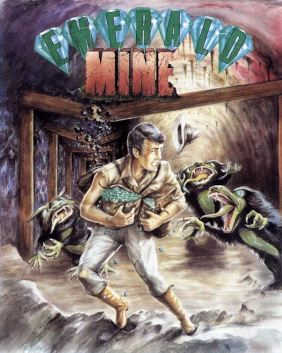
Emerald Mine is a 1987 puzzle video game developed and published for Amiga and Atari ST by Kingsoft. The series follows mines filled with various gems, such as emeralds. It is a Boulder Dash clone in which the player completes levels by collecting sufficient gems before reaching the exit. Emerald Mine was Kingsoft's best-selling title with reviews generally favorable, and spawned several sequels. It was also Volker Wertich's, one of the game's designers, most successful game until The Settlers in 1993, of which he was also the creator.

Samurai Jack: Battle Through Time is an action-adventure video game based on the American animated television series Samurai Jack. It was developed by Soleil Ltd., a then subsidiary studio of the Japanese video game developer Valhalla Game Studios and published by Adult Swim Games. The game serves as an alternative scenario that takes place during the show's series finale in its final season. It was released on August 21, 2020 for PlayStation 4, Xbox One, Nintendo Switch, Microsoft Windows, iOS and macOS and received generally mixed to positive reviews from critics.

Mr. Dig is a maze game designed by Rita Jay and published in 1984 by Microdeal for the Atari 8-bit family, Commodore 64, Dragon 32/64 and TRS-80 Color Computer. The game is a direct clone of Universal's 1982 arcade Mr. Do!.


















